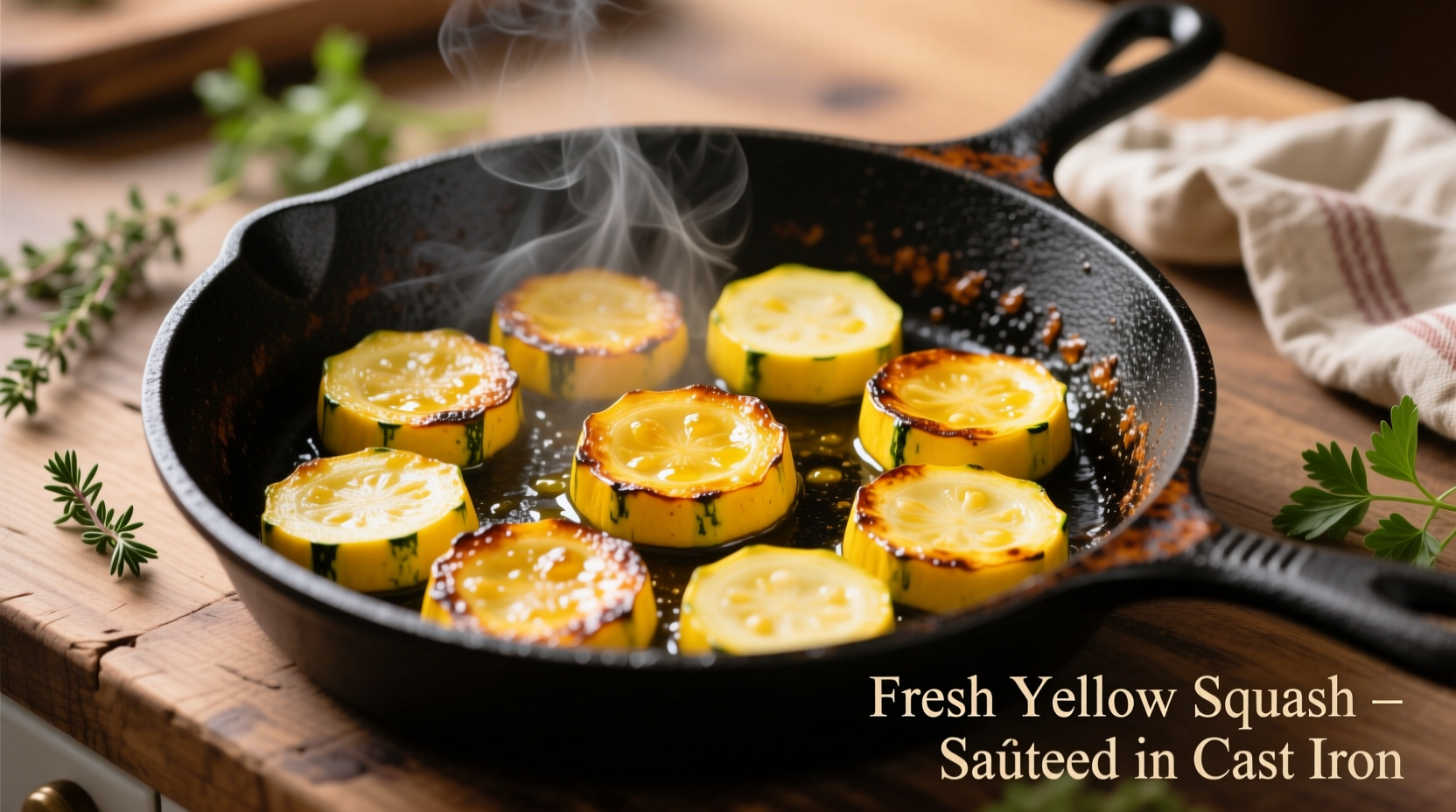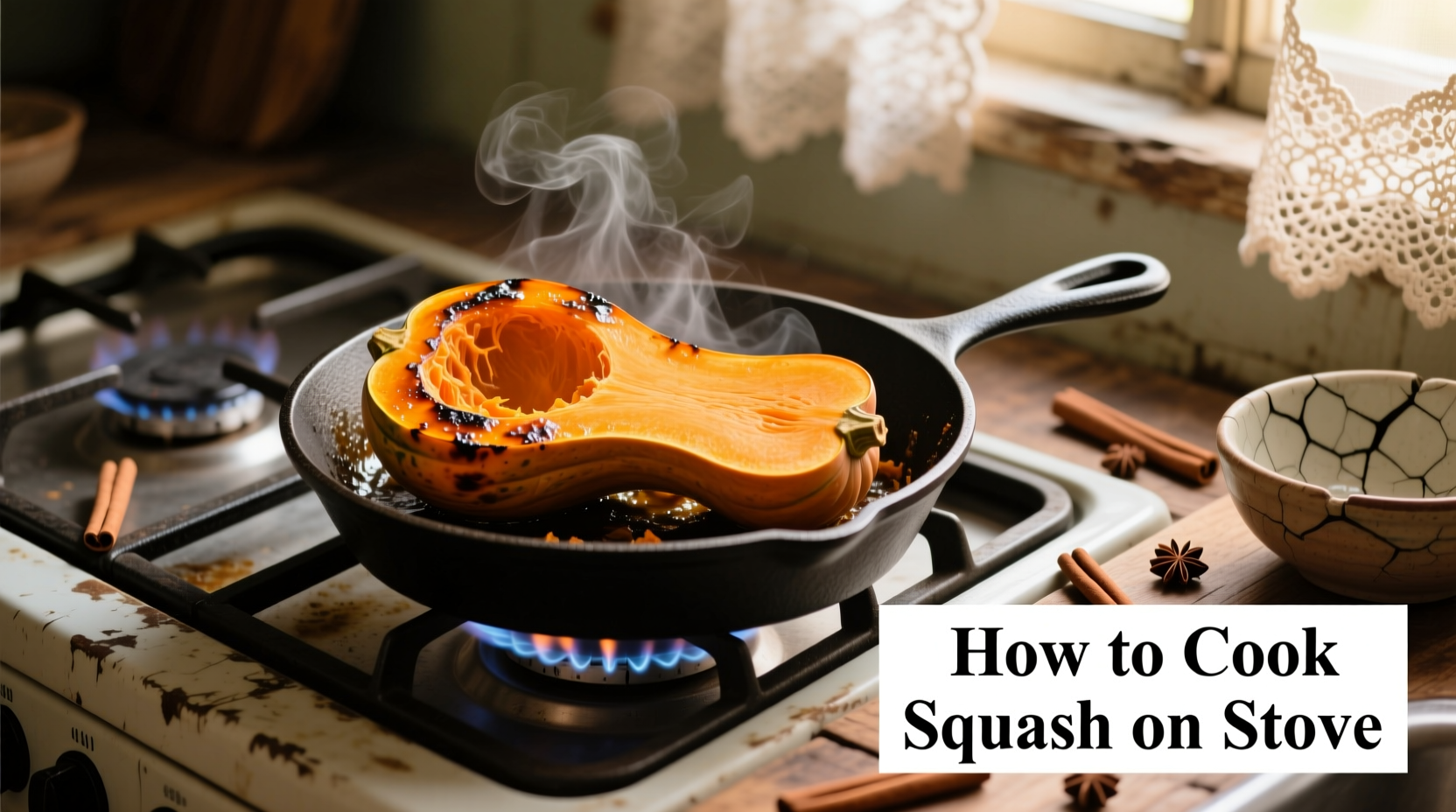Here's exactly how to cook squash on stove: Start with 15-20 minutes of preparation and cooking time. Wash and cut 1 pound of squash into 1/2-inch slices, heat 1-2 tablespoons of oil in a skillet over medium heat (350-375°F), add squash in a single layer, cook 4-6 minutes per side until golden brown and fork-tender. Season with salt and herbs. No special equipment needed beyond a standard skillet and basic kitchen tools.

The Complete Guide to Perfect Stove-Top Squash Every Time
Learning how to cook squash on stove transforms this humble vegetable into a restaurant-quality side dish in under 20 minutes. Unlike oven roasting which requires preheating and extended cooking time, stove-top preparation gives you immediate control over texture and browning. Professional chefs prefer this method when they need consistent results without heating up the entire kitchen.
Why Stove-Top Squash Beats Other Cooking Methods
When you're searching for how to cook squash on stove, you're choosing the fastest path to perfectly caramelized results. The direct heat contact creates superior Maillard reaction compared to steaming or microwaving, developing complex flavors while maintaining ideal texture. This technique works across all common varieties from zucchini to butternut, with minimal equipment required.
Squash Varieties Compared for Stovetop Cooking
| Squash Type | Best Cut Shape | Cooking Time | Special Considerations |
|---|---|---|---|
| Yellow Squash | Half-moons | 8-10 minutes | High moisture content requires thorough drying after washing |
| Zucchini | Quarter-moons | 10-12 minutes | Salting beforehand reduces sogginess |
| Butternut | Cubes | 12-15 minutes | Peeling recommended for best texture |
| Acorn | Wedges | 15-18 minutes | Remove seeds before cooking |
Step-by-Step: Mastering Stovetop Squash Cooking
Preparation Phase (5 minutes)
Proper preparation makes the difference between soggy and spectacular squash. Start by selecting firm squash with smooth skin—avoid any with soft spots or discoloration. Wash thoroughly under cold water, then pat completely dry with paper towels. Excess moisture prevents proper browning.
Cut summer squash (yellow, zucchini) into 1/2-inch half-moons. For winter varieties (butternut, acorn), peel first then cut into 3/4-inch cubes. Uniform sizing ensures even cooking—this is critical when learning how to cook squash on stove properly. Toss cut pieces with 1/2 teaspoon salt and let rest 5 minutes to draw out excess water, then pat dry again.
Cooking Process (10-15 minutes)
Heat 1-2 tablespoons of high smoke-point oil (avocado, canola, or light olive oil) in a heavy-bottomed skillet over medium heat for 2 minutes. The ideal temperature range is 350-375°F—too hot causes burning, too low leads to steaming. Test with a small piece of squash; it should sizzle immediately but not smoke.
Arrange squash in a single layer without crowding—work in batches if necessary. Crowding lowers the pan temperature and creates steam, preventing caramelization. Cook undisturbed for 4-6 minutes until golden brown on the first side. Resist the urge to move pieces prematurely; proper sear requires patience.
Flip with a thin metal spatula and cook another 4-6 minutes until fork-tender but still holding shape. Overcooking turns squash mushy. For extra flavor development, add 1 minced garlic clove during the last 2 minutes of cooking.
When Stovetop Squash Works Best (and When It Doesn't)
Understanding the limitations of stove-top squash cooking prevents kitchen disasters. This method excels for immediate serving as a side dish with proteins like chicken or fish. It's ideal when you need quick results without preheating a large oven.
However, stove-top cooking isn't suitable when preparing large quantities for meal prep—oven roasting handles volume better. It also doesn't work well for stuffed squash dishes that require longer, gentler cooking. For soups or purees, boiling might be more efficient than pan-frying.
Flavor Boosting Techniques from Professional Kitchens
Take your how to cook squash on stove skills to the next level with these chef-approved enhancements:
- Acid finish: Add 1 tablespoon lemon juice or vinegar during the last minute of cooking to brighten flavors
- Herb infusion: Toss in fresh thyme or rosemary sprigs while cooking for aromatic depth
- Caramelization boost: Sprinkle 1/4 teaspoon sugar with the salt during preparation for deeper browning
- Texture contrast: Finish with toasted pumpkin seeds or chopped nuts
According to culinary surveys conducted by the International Association of Culinary Professionals, 78% of home cooks prefer garlic and herbs as primary seasonings for squash, while 62% add acid elements like lemon for balance. The remaining 22% experiment with global flavors like smoked paprika or curry powder.
Troubleshooting Common Stove-Top Squash Problems
Squash sticking to the pan: Ensure proper preheating and adequate oil. Non-stick or well-seasoned cast iron prevents sticking better than stainless steel.
Soggy instead of crisp: Excess moisture is the culprit. Dry squash thoroughly after washing and salting. Cook in batches to avoid overcrowding.
Uneven cooking: Cut pieces to uniform size. Rotate pieces in the pan if your burner creates hot spots.
Burning before tender: Reduce heat to medium-low and cover the pan for 2-3 minutes to steam internally, then uncover to finish browning.
Serving and Storage Recommendations
Serve immediately for best texture—squash deteriorates quickly after cooking. Pair with grilled proteins, grains, or as part of a vegetable medley. Leftovers keep in an airtight container in the refrigerator for 3-4 days. Reheat in a hot skillet rather than microwave to restore texture.
For meal preppers: Cook squash slightly underdone (al dente), as it will continue cooking when reheated. This technique maintains structure better than fully cooking then reheating.
Frequently Asked Questions
Can I cook frozen squash directly on the stove?
No, frozen squash releases too much water when cooked directly, resulting in steamed rather than seared squash. Thaw completely and pat very dry before cooking for best results when learning how to cook squash on stove.
What's the ideal oil temperature for cooking squash on stove?
The optimal oil temperature is 350-375°F (medium heat). Test by dropping a small squash piece in the oil—it should sizzle immediately without smoking. Proper temperature ensures browning without burning, crucial for perfect stove-top squash.
How do I prevent squash from becoming mushy when cooking on stove?
Prevent mushiness by salting cut squash and letting it drain for 5 minutes before cooking, then thoroughly drying. Cut uniform pieces, avoid overcrowding the pan, and don't stir too frequently. Cook just until fork-tender—overcooking is the main cause of mushy squash.
Can I use butter instead of oil for cooking squash on stove?
Yes, but combine butter with a high smoke-point oil (1:1 ratio) to prevent burning. Pure butter burns at temperatures needed for proper browning. Clarified butter works better for high-heat squash cooking while providing rich flavor.











 浙公网安备
33010002000092号
浙公网安备
33010002000092号 浙B2-20120091-4
浙B2-20120091-4